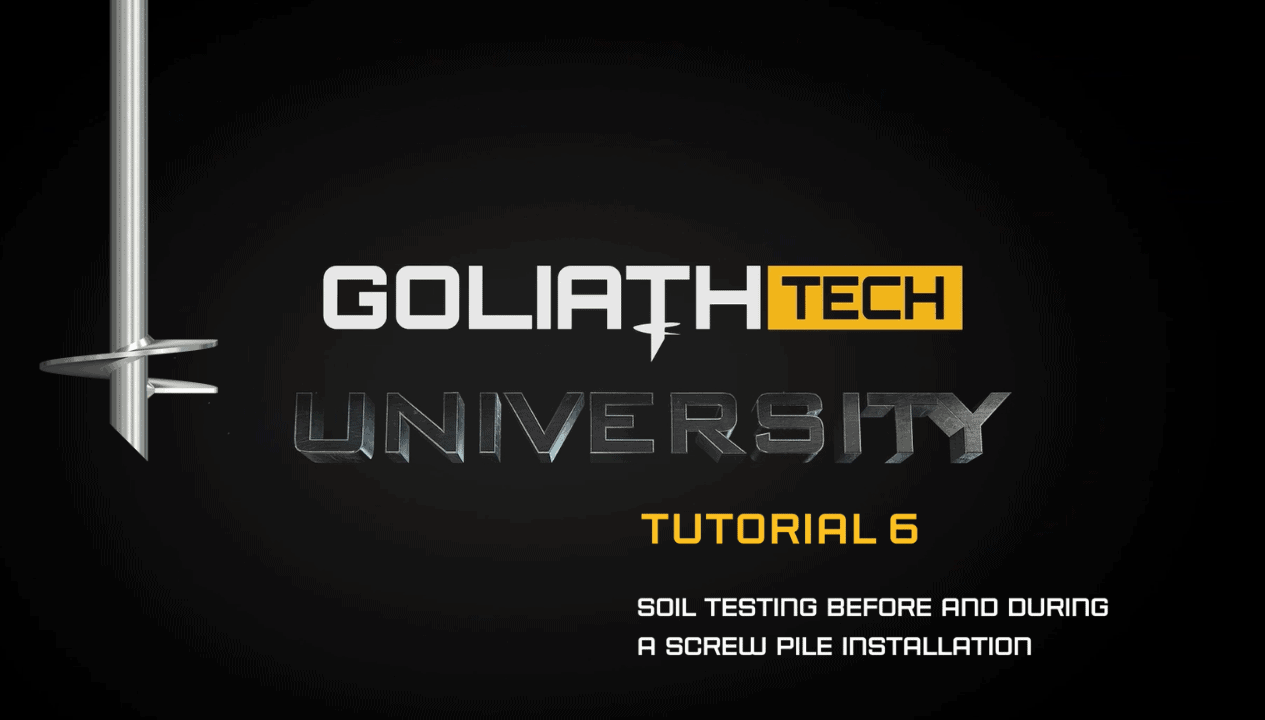GOLIATHTECH UNIVERSITY: TUTORIAL 6
Gardeners understand the importance of soil composition. A gardener can spend a lot of money buying plants and nutrients to add to the soil for the very best conditions, yet if that person doesn’t understand the soil composition to begin with, then it will be money (and time) wasted as their efforts won’t yield the desired results. In our industry it’s a similar idea, in that, knowing the soil composition enables us to make decisions about foundational projects that lead to successful outcomes.
SOIL TESTING FOR LARGER PROJECTS
That’s why for most large projects we do a soil test first. Although oftentimes the soil test has already been done before we arrive at the project site, because there are many risks involved and our customers—be they residential or commercial—want to minimize anything that could go wrong, either in the short or long term. We have to know what’s in the soil so we can use helical piles that work best for the particular soil type.
L’ANALYSE DU SOL POUR LES PETITS PROJETS
Although for smaller projects, such as a home deck, it’s not practical to have an expensive soil test done every time you build a small deck. So, in this case, by design a helical pile is its own soil test. As a foundational technology, helical piles screw into the soil much like a standard screw goes into wood, yet on a much bigger scale. As we install the pile, we know from the resistance we encounter, what type of soil we’re dealing with. Using the measuring equipment on our excavator, we mark the pile at every foot and write down our torque and our resistance results as we install the pile. Check out our page on the GoliathTech website to learn more about our helical piles.
As an example, let’s say at one foot we have 750 foot-pounds of torque of resistance. At two feet we have 1,050 foot-pounds of torque resistance, at three feet, we have 1,400, and further down we have 1,750. By knowing the size of the tube and the size of the helical pile, and the resistance torque as we install the pile, we know the exact composition of the soil and the capacity of the pile at each foot. We look at our installation chart and know that at 750 foot-pounds, this pile can hold 1,500 pounds of compression load, and at 1,500, perhaps it can hold 2,100 pounds. We account for the compression loads in our plans, so we know we’re well within our specifications to support our project.
About GoliathTech:
Do you work in the field of construction? For over 15 years, GoliathTech has integrated both strength and know-how to offer the best anchoring solution to support your residential and commercial projects. Our top-of-the-line helical screw piles are suited for any type of installation or application. Our installation service adapts to every soil type and does not damage the ground or any structures. Trust the experience and expertise of GoliathTech for your construction projects. Find a screw pile installer in your region or become a franchisee.
Share this Article


